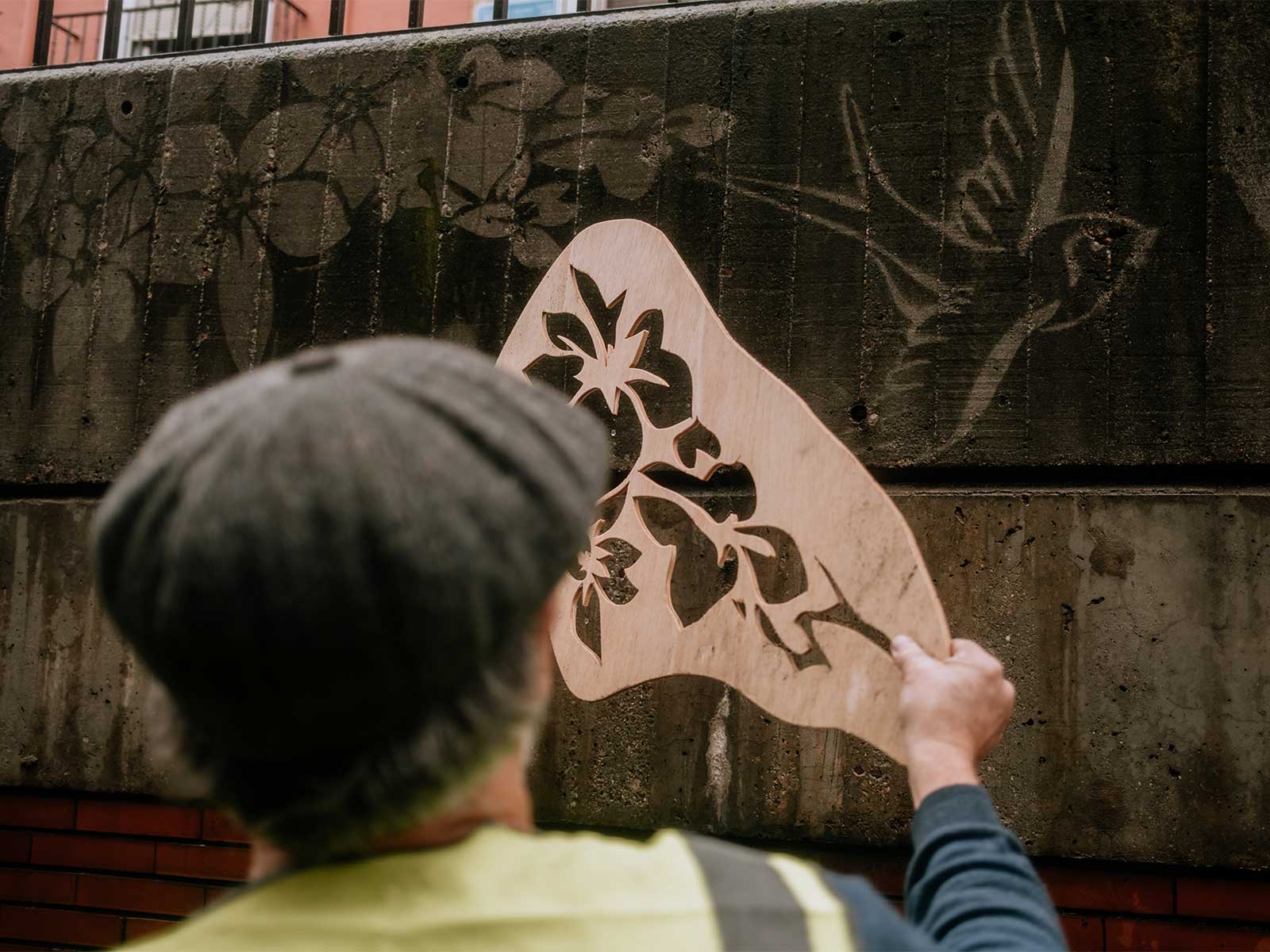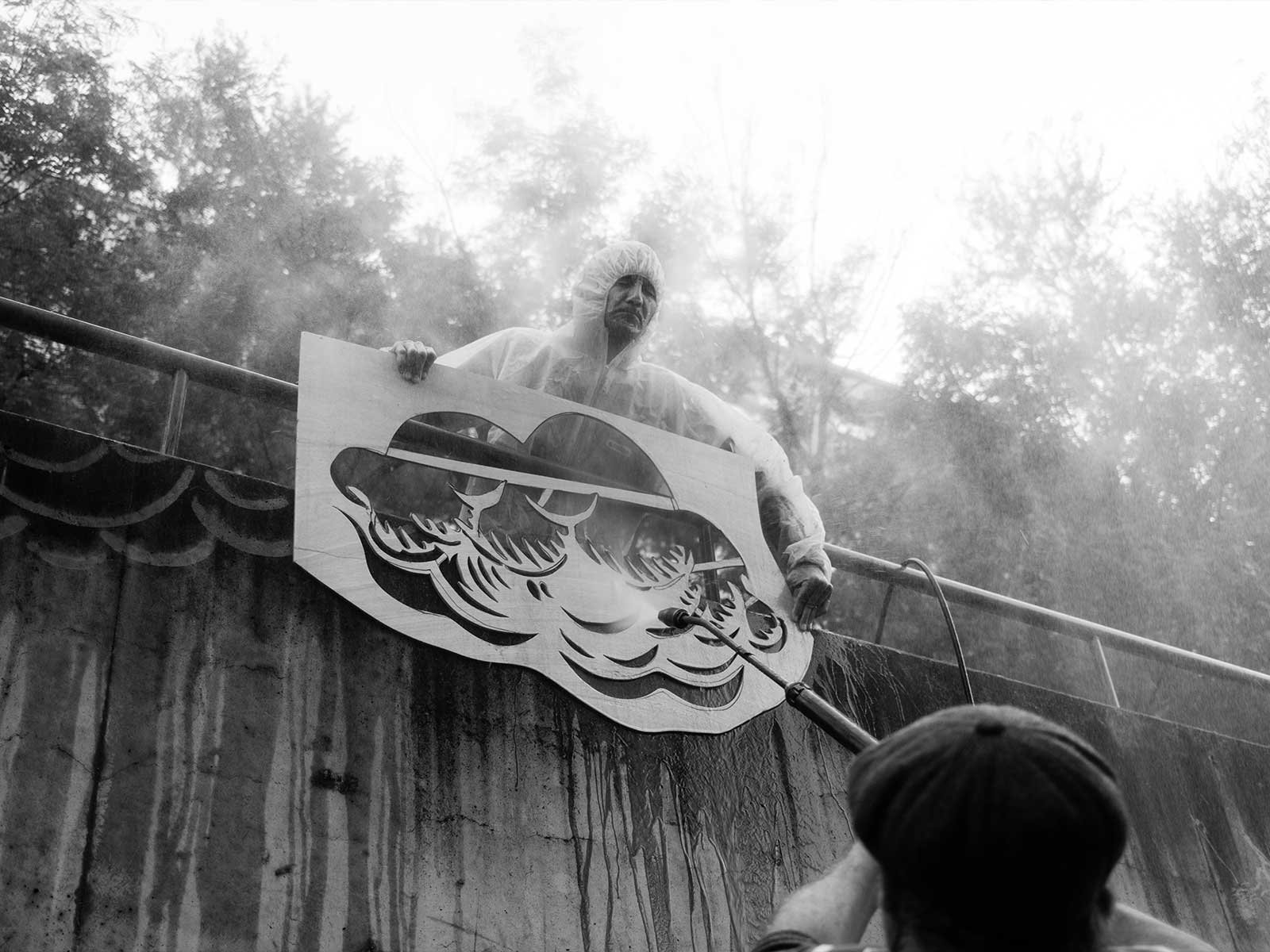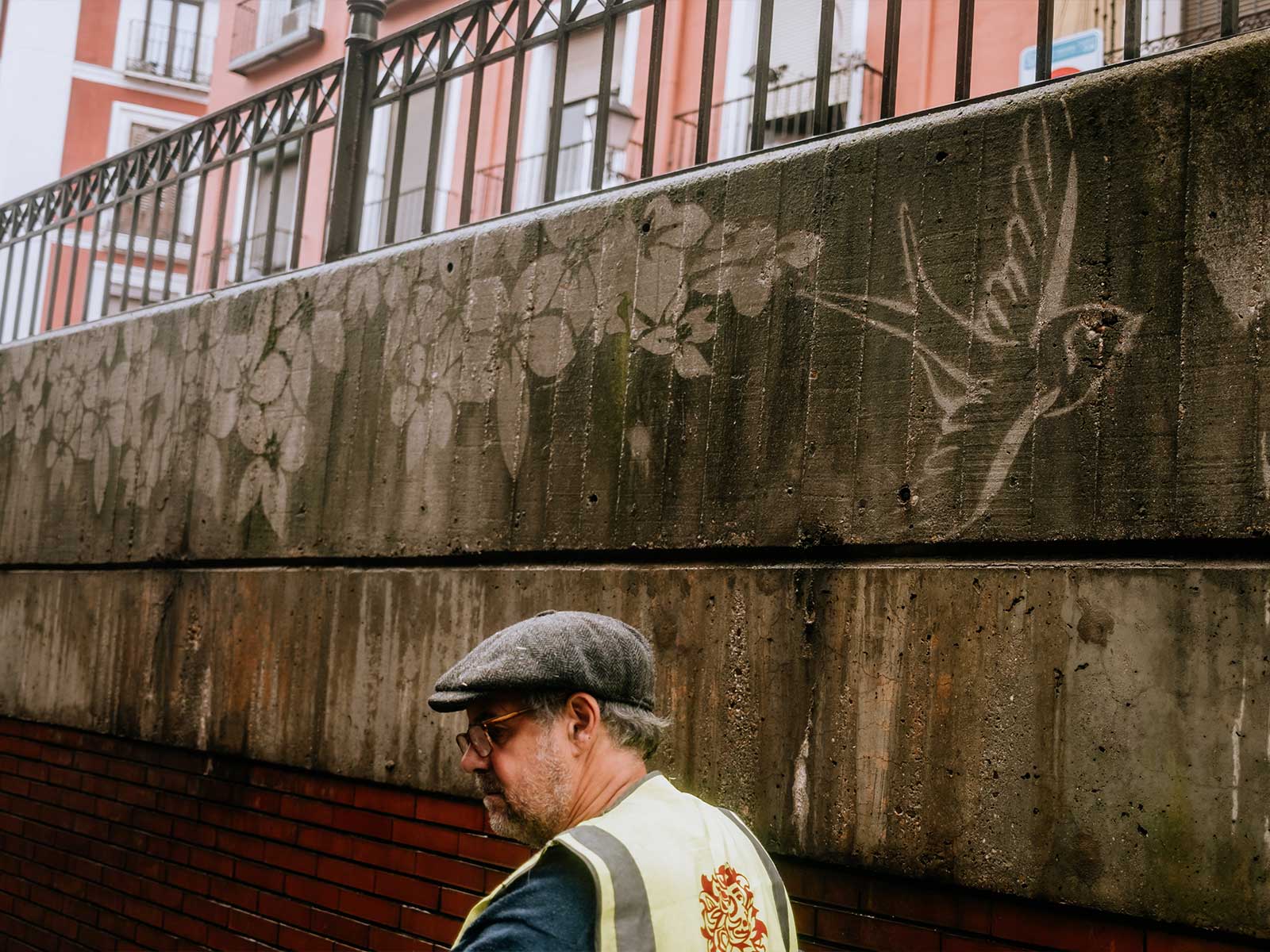Urban artist Paul Curtis Moose has collaborated with Fundación Cabify with the aim of showing how in many different ways one can contribute to improving society, such as through urban art with the reverse graffiti technique. “It is a somewhat peculiar technique as it takes advantage of polluted spaces to clean, claiming the degree of dirt that exists in cities. The result is similar to drawing on a dirty windscreen, but on a large scale”.
The interventions are located in a total of five iconic corners in the centre of Madrid: Cebada market, Parque de la Bombilla and some corners around Atocha station. On the other hand, the designs are inspired by natural motifs, claiming the importance and commitment that people and administrations that form part of the cities must acquire to contribute to the improvement of public spaces.

HIGHXTAR (H) – For those who don’t know you yet, who is Paul Curtis Moose?
PAUL CURTIS MOOSE (P) – I’m an English artist who created a way of making graffiti by using only cleaning processes. It began in the 90s when I got a friend who was a graffiti writer called Leigh Kenney (LSK) to write the name of the record label I was running on a tiled tunnel wall using old socks. It looked like normal graffiti but it had been made by removing dirt and not by adding paint.
It allowed graffiti writing to be legal and it turned the whole thing on its head. It became a simple creative expression that in no way should be seen as a negative thing. It’s so temporary it’s like writing in the sand with a stick. Because of this reversal of the process I called it reverse graffiti.
(H) – What was your first contact with the art world like?
(P) – My first contact with the art world outside of my experiences in school ( I didn’t study art at school but loved drawing maps and diagrams) might have been a project with Saatchi and Saatchi who asked me to design and install artwork for a washing line for aerial washing powder. They won an award with it and I wasn’t mentioned anywhere. I think that’s probably the artworld in a microcosm.
(H) – Where does all the imaginary of your artistic work come from? You are the creator of Reverse Graffiti, what can you tell us about this technique? How can your project measure pollution in cities?
(P) – A lot of my imagery I draw directly onto the plywood I make my stencils from. Sometimes projecting onto the wood from images I’ve collected from lots of different sources. I often use imagery taken from nature as the trick I use to engage passers by, I aim to make something look beautiful if I can, flowers and plants and images from nature make this a bit easier as we generally have good feelings towards that kind of imagery. It was the same in Madrid apart from the rain clouds, in that case there was only a part of the wall at the very top that was suitable to work in, when I looked at them at first they already looked like dark raining clouds so I chose to accentuate them with images of clouds and rain. I never name things but that one is called, “ Rain is beautiful sometimes”.
We don’t see enough of it in Benifallet where I live and in many places now the rain is very destructive as the effects of global warming take place The work is never obtrusive as it can only use the colours that naturally exist in any environment. Colour wise I’m lucky to find green and orange moss so the subtlety of the picture I make doesn’t shout like most other pictures you see in urban environments and this actually works in intriguing people who pass. Once they realise that I’m using pollution to make a picture of nature my message is passed on. The extent of the pollution is often shocking as my work almost appears black and white, the filth and the cleaned in great contrast. It’s a surprise to most but it’s an important surprise. From a vision of beauty/ nature into something quite sinister ( the darkness of pollution) in a few seconds.

(H) – How do you think urban art can contribute to improving society?
(P) – Though the investment of time and love and effort involved in making these works in mostly areas where this doesn’t make sense ( often soulless concrete walkways) these places are transformed in a way that is extremely positive and I’m certain that it makes people feel better about their environment and also in turn themselves and that can get passed on easily and the world gets better.
(H) – Who are your references?
(P) – My references are Andy Goldsworthy and David Mach. Both of them use what already exists in an environment to enhance that environment and also to draw attention to the scale of things. Goldsworthy uses only what exists in nature and David Mach uses things that are generally over produced. They are maybe the yin and yang.
(H) – You have just collaborated with the Cabify Foundation to revitalise polluted public spaces through urban art. How did this project come about?
(P) – Fundación Cabify aims to generate an impact beyond mobility by trying to promote better cities and protecting environments of special environmental value, a goal that I also share. They knew about my work and my ideas, so we decided to collaborate to try to make an impact on cities through art.
(H) – Where can we find the 5 interventions that you have distributed around Madrid? distributed around Madrid?
(P) – The aim of the project was to make several interventions across the city. We created murals in three locations at the park de la bomba, one large one by the school on the football pitch and two smaller ones on walls, one quite close to the pitch and the other near the fountain a few hundred metres into the park. There are two other larger murals on the entrance and exit to the underground car park at the mercado de la cebada. The murals are made up of either floral imagery with a bird creating a stream of flowers as it flies. The other murals are made up of lots of cloud images to create raining walls.
(H) – How far would you like to go with this initiative?
(P) – I would love to take this project further and make interventions in the other territories where cabify operates. I made an intervention in Mexico City in 2012 after doing a workshop with children who were attention an education centre. It was around the time of the day of the dead. At first I created flowers everywhere on the paving at the placa de la revolución and then sometime later I added lots of skull imagery synonymous with the day of the dead. They have one of the worst records for air pollution on the planet and the piece I made was a comment on that. Made very gently but with a strong message.

Sigue toda la información de HIGHXTAR desde Facebook, Twitter o Instagram
